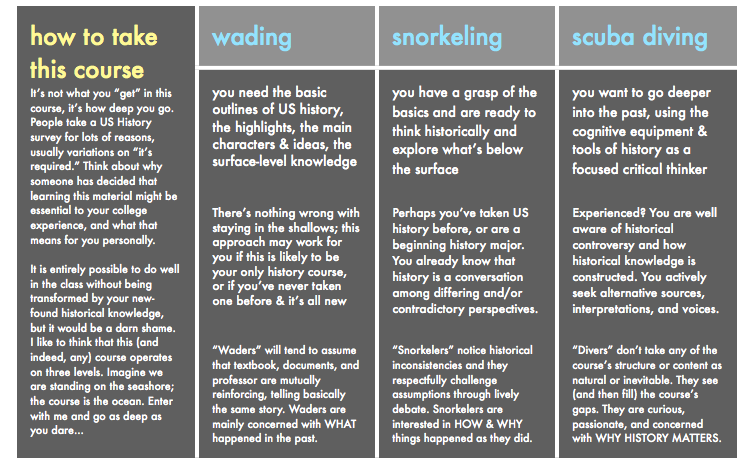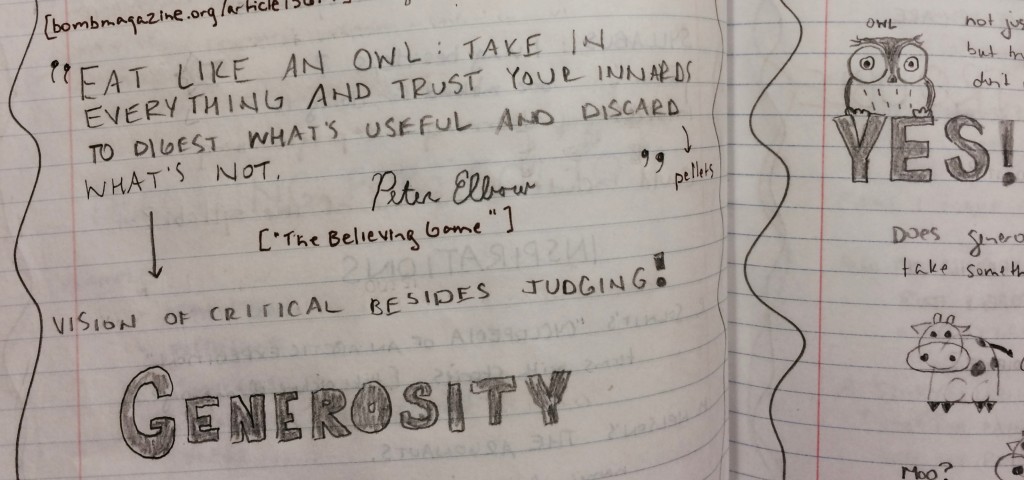I’m about to take a break form this project for the holidays. Before I do, I wanted to make note of a few sources and ideas to revisit in January 2016.
A Tentative Outline!
Over the past week, I decided to summarize and synthesize my work since early November. So I created an outline. I’m not posting the entire thing on the blog, but I’ll post the overall structure. I’m (very loosely) basing it on a teaching portfolio.
- Introduction to Book and Key Question: Am I (still) a Teacher?
- Teaching Portfolio, part 1: Theories, Manifestos, Assessments. This section will include an undisciplined cv, past teaching materials, teaching philosophy, reflections on what a teacher is and what an education is for.
- Teaching Portfolio, part 2: Imaginary Teaching. This section will include 3-4 imaginary (or imagined?) syllabi, with class notes, reading lists, assignments and other class related materials.
Academic Assholes
16 Years in the Academy Made me an Asshole
Gradually, I started to resent academia, partly because I couldn’t get a permanent job and partly because of the elitism and snobbery that came with the profession—an elitism that seemed inextricable from the environment and the people in it.
Rani Neutill
Yes.
I’d been an asshole because I thought that having a Ph.D. made me special or better or smarter than everyone else, when in fact, all it made me was, well. . . an asshole.
Rani Neutill
Hell yes.

